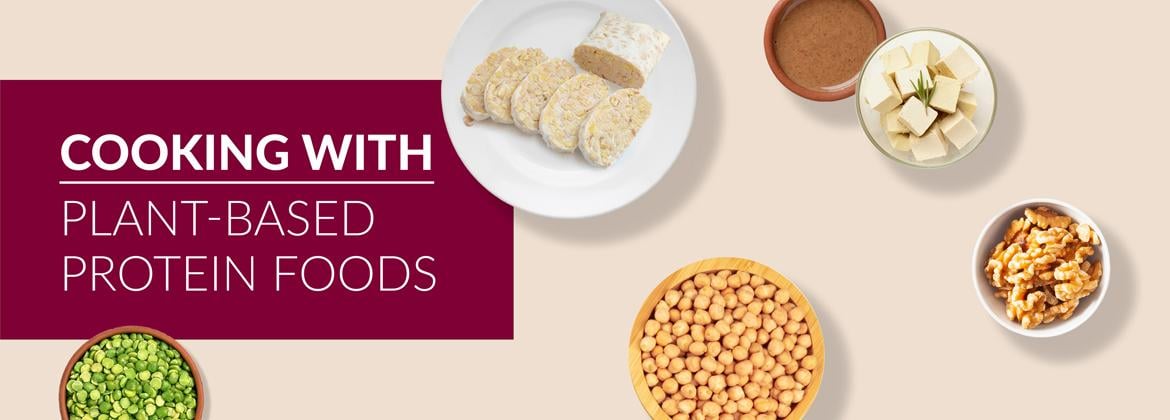Print or share this article
Cooking with plant-based protein foods doesn’t need to be complicated! Follow these tips to learn how you can incorporate them in your meals and snacks.
On this page
- Types of plant-based protein foods
- Choosing plant-based protein foods
- Preparing and cooking plant-based protein foods
Types of plant-based protein foods
There are many types of plant-based proteins foods, such as:
- legumes
- split peas
- chickpeas
- lentils (red and green)
- lima, black, or kidney beans
- soy products
- tofu
- tempeh
- unsweetened fortified soy beverages
- soybeans (edamame and dried soybeans)
- nuts, seeds, and nut butters
- walnuts
- almonds
- pumpkin seeds
- sunflower seeds
- peanut butter, nut butter or non-nut alternatives
Choosing plant-based protein foods
Plant-based protein foods are part of a healthy eating pattern and can be budget friendly. Follow these tips to choose healthier options and save money.
Choose healthier options
When selecting plant-based protein foods, choose those that have little to no added sodium, sugars or saturated fat. These include:
- lower sodium or unseasoned tofu and tempeh
- unsweetened yogurts and fortified soy beverages
- dry roasted nuts without added sugar, fat, or sodium
- nut butters that only contain nuts or seeds in its ingredient
- dry legumes instead of canned, or lower-sodium canned legumes
Save money
Many plant-based protein foods can be inexpensive and some, like legumes, have a long shelf life. To eat healthily and stick to your budget, try:
- stocking-up on beans, lentils and other legumes
- dried legumes are usually less expensive than canned
- buying tofu in bulk or when it is on sale and freezing it
- storing leftover cooked beans in a sealed container in the fridge for up to 5 days or in the freezer for up to 6 months
To save money when buying nuts, seeds, and non-nut alternatives, try:
- buying raw nuts and roasting them at home
- checking grocery flyers for sales on nuts and nut butters
Preparing and cooking plant-based protein foods
Plant-based protein foods often have a neutral taste so they work well in many recipes. Follow these tips to help you incorporate them to your favourite meals.
Prepare in advance
To prepare plant-based protein foods before cooking or eating them:
- press tofu before cooking to remove excess water
- this will help the tofu sear and become crispy when cooked
- marinate tempeh and tofu before cooking to add flavour
- use your favourite homemade dressing with oils that are healthy fats and your favourite seasonings
- store natural nut butters upside down in the fridge after opening
- this can help prevent the natural oils from separating
- soak dry beans overnight to rehydrate them and rinse canned beans
- this will reduce sodium and make them easier to digest
- dry lentils and split peas do not need to be soaked overnight
Add to your recipes
There are many ways you can add plant-based proteins to your recipes. Try:
- adding beans to chilis, burgers and quesadillas
- using nut butter to prepare sauces for noodle dishes
- thickening sauces, soups and smoothies with blended soft tofu
- steaming uncooked edamame or roast chickpeas and eat as a snack
- topping salads with almonds, pumpkin seeds, sunflower seeds, or chickpeas
- sautéing extra firm tofu or tempeh and add to stir-fries, noodles, or sandwiches
- adding lentils to soups, sauces, and dishes with ground meat, like Shepherd’s Pie
- substituting dairy products in recipes with unsweetened soy beverages and yogurt


